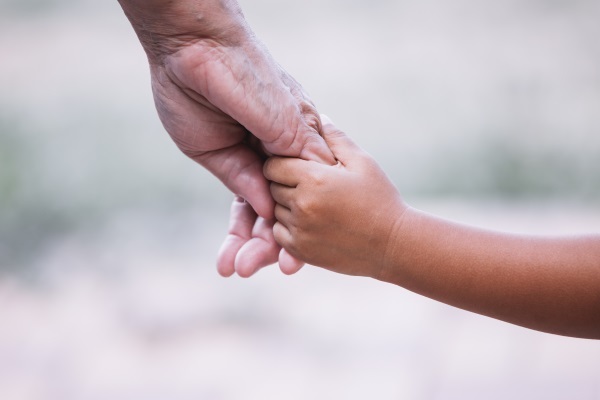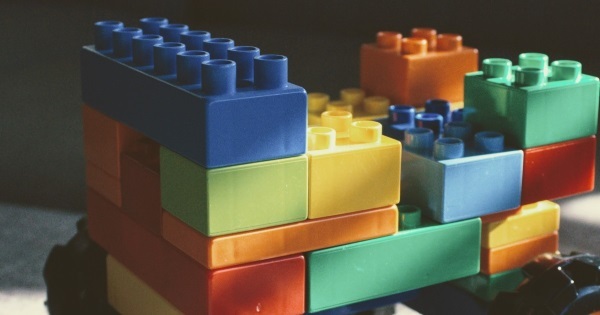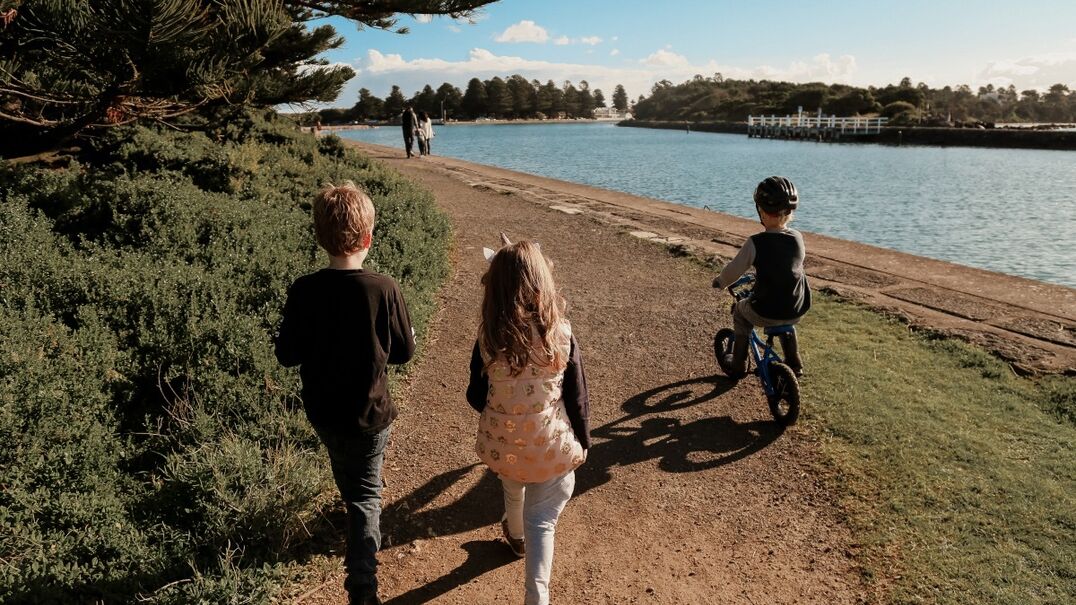COVID has taken a huge toll on our collective mental health and wellbeing in Victoria.
For a lot of people who have previously suffered trauma or experienced any mental health problems it’s been even harder. For some children in out-of-home care who have experienced developmental trauma as a result of neglect or abuse, it’s been devastating.
Reports show during Stage 4 lockdown restrictions, there’s been a dramatic increase in Victorian children hospitalised due to self-harm and an unprecedented number of calls from Victorians to mental health services.
In this article we’ll explain how using a relationship-building approach can help a child feel safer, more secure and cared for.
Please note: the approach detailed below is not a crisis response, so if you are worried about a child hurting themselves, seek help immediately.
Stuck walking a tightrope of fear
When children don’t receive the care they need, their brains and bodies adapt to keep them alive. They can get stuck in a cycle of fight, flight or freeze responses when they experience stress or fear. Even when they’re physically safe, many don’t feel safe. Things that don’t scare others may be terrifying to one child because of past experiences. They may be walking a tightrope of fear and anxiety every day, scared by the world and well-meaning people around them.
For some people, the uncertainty of COVID feels overwhelming. Some will feel more alone. Mental wellbeing will likely be slipping. Household relationships may be very strained as everyone tries to deal with additional stresses. Most people will be missing being able spend time with friends and extended family, go to the movies, play sport or do other things they enjoy.
Helping kids feel secure
While there’s no timeline for when we’ll be able to get back to ‘normal’, there’s an approach adults can use to help the children in their care ‘sit’ with the uncertainty.
The PACE approach helps children to feel that their caregiver genuinely wants to connect with them – to understand their perceptions and feelings, and to provide a safe and non-reactive response. PACE is a relational approach that teaches the child that adults can be trusted, and that tough times can be worked through together.
With so many households spending a lot of time together, PACE provides an opportunity to strengthen relationships and help the child or children in your care feel safe and secure.
What is PACE?
PACE stands for playfulness, acceptance, curiosity and empathy. Clinical psychologist Dr Dan Hughes developed the approach to raising children who have experienced trauma, basing it on the way a parent interacts with a baby.
Each of the elements of PACE are important. However, playfulness is an approach you only sometimes do with a child who has experienced trauma. Acceptance, curiosity and empathy, however, are approaches you should adopt and use all the time.

Playfulness
When the time feels right, be playful. You might use a storytelling voice instead of a lecturing tone when disciplining a child. Spend time one-on-one with them doing something they enjoy. It might be frustrating at times for the adult but be willing to try things and over time you’ll discover activities you both like. Show them that you’re having fun with them. This will be a novelty for some children and helps them realise that they are loveable.
Use a light tone or less-serious approach with the child or young person; but only when it feels appropriate. It’s not about making jokes out of everything and definitely not about making fun of the child. Ideally the play needs to be regular and in small ‘doses’. Stay attuned to the child’s mood – being playful when the child is really distressed will not help at all.
Playfulness can be hard with adolescents and teens, especially if they missed out on play in their younger years. They may want to play games or with toys designed for younger children. Leave items they can play with around the house to reduce any shame they feel about wanting to play with these things.

You can also useful playfulness to diffuse a situation.
For example:
If you’re helping the child with schoolwork and they’re no longer listening to you, rather than yelling at them to pay attention, understand their attention span has already waned. Instead of trying to force them to concentrate more: break it up. Initiate something that uses their bodies – for example put on some music and do a silly dance together for a few minutes before returning to the schoolwork.
Acceptance
By separating the child from their behaviours, we can show non-judgemental acceptance of them as a person.
The key to this is distinguishing between what the child did or said (which is what we react to), and the perceptions, thoughts, feelings and beliefs of the child that led to their behaviour. We don’t have to accept the behaviour, but we must accept the underlying reasons that motivated the child to behave that way. It’s possible to firmly discipline a child’s behaviours while still always unconditionally accepting them. This is the hardest part of PACE and takes a lot of practise and self-regulation from the adult.
For example:
If the child has misbehaved, avoid yelling at and punishing them. Instead, once you’re both calm, use curiosity to try and understand why they acted that way and agree on the consequences of their behaviour instead. “I can see that you were really mad at me when I said you couldn’t watch the TV”; “I get that you have big feelings about this, no wonder you got mad”.
Teaching the child how to think about their feelings and then asking them to explain to their sibling why they acted like that and apologise will be more useful than being told off and sent to their room alone. The child will usually already know that the way they behaved wasn’t appropriate, but if you’re accepting of them as a person and they know you love them, they won’t feel like you’re going to reject them because of their behaviour. They will realise that however they behave, the relationship between you is safe, but unwanted, unpleasant or dangerous behaviour comes with consequences.
Curiosity
Demonstrating a genuine desire to understand what the child is feeling makes them feel heard and worthy. If you aren’t curious about them and instead make assumptions, you can make the child feel misunderstood and unsafe which will only escalate problem behaviours.
Try to avoid judgement and ask opened-ended questions in a non-confrontational way. Many children won’t understand why they reacted a certain way, so you need to not expect an answer. Before attempting to talk things through, try doing an activity alongside them (rhythmic activities like kicking a ball or walking together are great) rather than forcing them to sit and make eye contact with you. Be aware of your stance, tone of voice and body language – a child may be easily intimidated because of past experiences.

For example:
Try to avoid asking ‘why’ they did what they did – this usually results in a shrug or an “I dunno”.
A good approach is to ponder aloud. Try and start with: “I wonder if you felt like…”, “is it possible you feel…”, “I’m guessing that felt confusing when…”, “what do you think was going on when…” or “I could tell that you felt really upset when I said no, can you help me understand what that was about?”
This isn’t a one-off conversation; you’ll need to have lots of these chats. Many children will be reluctant to open up, especially if they’re ashamed of their behaviour. Avoid using an annoyed or angry tone, lectures aren’t useful in these situations.
Empathy
By being empathetic you’re showing that even though they feel like that, you care about them and are not judging them. By doing this, you’re helping the child understand their emotions. You’re helping them build resilience to deal with painful feelings. You’re also separating out their feelings from their behaviours – you see and accept their feelings, even as you set limits on their behaviours.
Sometimes it feels like empathy (and acceptance) are the same as condoning poor behaviour – but they aren’t! You can make it clear that the behaviour wasn’t OK and needs to change, while still conveying acceptance and empathy for what underpinned that behaviour.
For example:
Use curiosity to gently ask and understand what they are feeling. If the child is reluctant to talk, but looks like they feel sad, frustrated or scared, let them know you can see they don’t feel good and that it’s OK to feel that way. “You look really sad. I’m so sorry this is so hard for you”, or “oh now it makes sense why you hit your sister, if you were feeling that mad at her!”
If they start to share how they feel with you, listen without interrupting. You can say you feel sad that they feel like that, but don’t tell them they are silly for feeling that way. It’s not coming up with solutions to fix things, or even about reassuring them. Sometimes it’s not saying anything at all. It might be just sitting with them, holding their hand and showing you care about them. Try and feel what the child is feeling.
Importantly empathy is very different to sympathy. Dr Brené Brown explains the difference well in this 3 min video.
An ongoing way of approaching the relationship
The PACE approach isn’t something you pull out and use occasionally, it’s something you use every day. It supports the child to feel safe and trust you, leading to a better relationship with you and to them living a more rewarding, healthy and productive life.
For the adult it is also rewarding because it reduces conflict, helps build a better connection with the child and enables you see them and their strengths underneath any challenging behaviours.
The PACE approach is also very useful in situations of ‘blocked care’ or ‘blocked trust’.
While PACE was developed as a trauma-informed approach to working with children, the principles can strengthen other relationships also. Try using the approach with anyone you care about. A bit more playfulness, acceptance, curiosity and empathy will help us build a stronger, healthier and more compassionate community.
If you’re interested in finding out more, you can:
- Read more about PACE on Dan Hughes’ Dyadic Developmental Psychotherapy Network website.
- Enrol in the next PACE webinar as part of Berry Street Take Two’s online professional development series.
Berry Street’s Take Two program is a Victoria-wide therapeutic service helping to address the impact on children of the trauma they have experienced from abuse, neglect or adverse experiences. At Take Two we see who the child is, not just the behaviour. All babies, children and young people deserve to feel safe, loved and valued. We use clinical frameworks, neurobiological research and evidence-informed approaches to repair family relationships and develop networks of caring adults that focus on what the child needs. Take Two can provide specialist clinical consultancy services to other organisations.
Contact us for more information.





